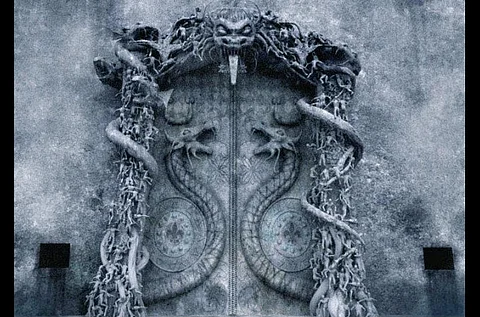

Considered the world’s richest Hindu temple, Sree Padmanabha Swamy temple in Thiruvananthapuram is dedicated to Lord Vishnu. While the origin of the temple is believed to be “lost in antiquity”, Sree Padmanabha Swamy temple finds mention in ancient texts including Sangam Tamil literature.
Unlike other temples in Kerala, Sree Padmanabha Swamy and its assets were managed by a trust controlled by the Travancore Royal Family.
The temple contains six vaults built under the sanctum sanctorum. While five of the six vaults have been opened, Vault-B, the secret vault remains unopened, opposed by the royal family on the grounds that opening the vault would invite God’s anger.
In 2014, the Supreme Court entrusted the administration of the temple to a five-member committee and directed former Comptroller and Auditor General Vinod Rai to undertake the audit of the temple properties, assets and accounts. The apex court has also deferred the opening of Vault-B until the enumeration of other vaults were completed by the committee.
According to a special audit report that was submitted by a committee headed by Vinod Rai, 769 pots of gold worth Rs 186 crores and sale deeds of 2.11 acres of land that were sold in 1970 are missing, while around 263 kilos of gold are deemed lost in purification procedures from the Sree Padmanabha Swamy temple in Thiruvananthapuram.
The missing treasures that Rai accounts for are only from five vaults buried five feet under the temple’s floors.
It was in July 2011 -after Rai’s first report- that the outside world came to know of the existence of six vaults out of which five purportedly housed more than Rs 100,000 crores treasure. Of the six, vault B still remains shrouded in secrecy. The Travancore Royal family had staunchly opposed the opening of this vault that is rumored to house many treasures.
Though it was presumed to be unopened till then, but Rai had cited temple records to show that vault B had been opened twice in 1990 and five times in 2002.
The legends and superstitious myths surrounding the opening of the B vault in the temple had resurfaced at that time with a vengeance, a few of which are mentioned here:
The Curse
The first ruling by the Supreme Court to assess the wealth of the temple came after advocate TP Sunder Rajan had filed a writ petition in a Kerala court. Sunder Rajan passed away in July 2011.The unexpected death of Sunder Rajan was held by many as a divine backlash. Many believed that opening the vault without the prescribed puja would invoke the curse.
With the death of the mother of one of the observers and another observer injuring his leg, the rumours were further reinforced. Elderly residents living in and around the temple also recalled having heard stories of how opening the B-vault would trigger a flood as per the Ocean theory.
Snake God Theory
Most of the superstitious beliefs that surround the B-vault stem from the engravings on the door of the vault that resembles a large cobra who is said to represent the place of recline of the temple deity Lord Vishnu.
Stories hence abound of how the door is protected by the snake-god, and can only be opened by sadhus chanting the ‘Garuda Mantra’, the only hitch being there was no such sadhu in India. If the vault was opened using man-made techniques, it would lead to catastrophes, Hindu mythology experts had felt.
Ocean Theory
About a century ago, faced with a severe famine, temple officials had tried to break open the chamber, but stopped on hearing what sounded like rushing water. The story went on how the vault was connected to the Arabian Sea, and once it is opened, the sea would flood the entire city.
Vaasthu
“’It is ideal that we keep the B vault locked. The treasures stored in that vault that is located below the deity’s head are protected by taming of micro-natural forces by tantric experts for ensuring its safe upkeep. If anyone dares to open that vault, it would trigger off a series of troubles”, Vaasthu expert K Muraleedharan Nair had then opined.
Rai’s recommendations
The wealth management audit committee was constituted based on a Supreme Court directive in 2015 to look into alleged irregularities in the functioning of the temple administration. The SC order came on the heels of the recommendations of amicus curae and senior advocate Gopal Subramaniam who had sought a complete overhaul of the said administration in 2014.
The comprehensive audit report which is said to be in five parts that come to 1000 pages bound in two volumes and covers a period of 2004-2014, reiterates that there was a lack of transparency in the auditing process of the temple wealth.
Rai also points out to the ‘abnormal’ increase in temple expenditure and has delineated strict accounting norms and record-maintenance in minute detail for the future.
He has also recommended the constitution of an administrative committee comprising a retired IAS officer, a representative each from the Travancore royal family and the Devaswom Board, the tantri (chief priest) of the temple, two prominent devotee-citizens and an executive officer appointed by the Kerala Government with a fixed tenure of three years.
This committee would be responsible for the preparation and approval of the temple’s annual budget as well as supervise its entire functioning of the all activities within the temple and be made accountable for all functioning.